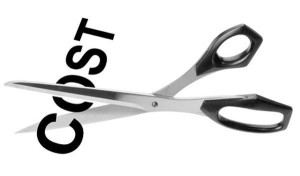 Spending the right amount for business growth and achieving ample savings will come in handy with a wise budget plan. In setting up and acquiring a shop, being the master of the trade starts with the basic knowledge that has been innovated through time. Same principle is applied in finance management.
Spending the right amount for business growth and achieving ample savings will come in handy with a wise budget plan. In setting up and acquiring a shop, being the master of the trade starts with the basic knowledge that has been innovated through time. Same principle is applied in finance management.
Each industry imposes different treatments but is formatted out of basic uniformities. In most budget drafts one can practically find lease, consumption, personnel, supply, operational costs, taxes, debts, and insurance.
Deal with the basic math on your own and position the figures to where it is favorable to the business.
Learn the theories off the book and off the internet and fuse all techniques that have been proven to work in chosen your line of business. Ask the old timers in the community to testify on which method is best in the region. Consult specialists if needed in order to hear a freestanding point of view about your business plans.
Once you have itemized and calculated the average outlays, analyze if it matches well with the forecasted profits. Starting small is the safest way as you become accustomed to the math. At times it is also best to see the big figures so upfront corrections are dealt with in a timely manner. See how these steps can help.
Draft a spreadsheet.
Put all entries in your worksheets so you can score the priority incidentals. Seeing all the numbers together in one page makes it easier to highlight the redundant amount and redirect the money flow towards saving.
Know the trade standards.
Check government websites to ensure the legal adherence of your business. Outline your business with respect to the recent trend. Know all possible work around in making your business withstand the economic challenges.
Include miscellaneous.
Factor in some room for miscellaneous to cover for the differences out of rough estimations and real costings. This also ensures funding to emergency and unforeseen payments.
Bid with the best wholesaler.
Diversify the source of your supply. Do not be exclusive to one bidder. Allow a certain percent of your supply to some from rotating vendors. Aside from this, being a good backup plan, it gives you a concrete basis of testing the quality of all other suppliers and being up to date with their price tagging.
Regulate costing.
Look at the pieces that can be controlled to a high level. Make onetime purchases of these items and study the logistics of each material needed to run the operations. Handling your own inventory is much efficient than handing the job to a third party facility. Procurement by the bulk gets you a considerable savings with the principal cost and freight fees.
Evaluate the budget chronically.
There are some interesting rates that may earn the business possible credits in the future. Make sure that your focus is still on the money that’s on hand more than what is not there yet. Having a long term vision in budgeting is helpful but do not get too excited with factors not worth risking for. Veer away from distractions; you have as much to lose as the big-timers when you overlook some slight alterations with your dues. Stepping back and reviewing previous expenses in a regular basis allows you to correct some errors and improve further in implemented cost control.
Retaining the profitability of a business should still be the top priority in this tough economic time. Require more focus on smart finance controlling. Make sure all business savings count. It is a delight to finally find retributions out of your well plotted scheming and hard work.